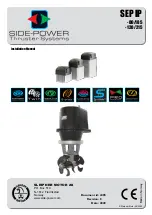
System Overview
ROBO-8713BVG2 User’s Manual
1-1
Chapter 1
System Overview
1.1 Introduction
ROBO-8713BVG2 based on Intel® 865 chipset to support Intel® LGA 775 processor
that includes Pentium 4, Pentium D, Celeron D as well as the most fantasy Intel®
2nd generation dual-core processor, Core 2 Duo. Intel® Infrastructure Platform
Division (IPD) included its 865 chipset February, 2006 to echo the demanding of
more competitive platform. Since the chipset was launched three years ago, the
processor it supports at time is socket 478 Pentium 4 & Celeron processor. More
aggressive to have the cutting edge, the 865 chipset is capable of supporting Socket-
T, the LGA 775 socket with dual-core processor. As result, cost effective chipset
with easily reachable LGA 775 processor are two irrefutable advantages of ROBO-
8713BVG2 for many applications that would like to transition from socket 478
processor to higher efficiency LGA 775 processor.
The single board computer supports Intel Core 2 Duo, Pentium® D, Pentium® 4, or
Celeron D in an LGA775 socket that is equipped with dual-core, hyper-threading,
EM64T, EIST, XD and VT technologies.
ROBO-8713BVG2 single board computer includes dual Gigabit Ethernet ports, and
dual SATA connector, plus: dual IDE channel; one FDD channel; eight USB 2.0 ports;
dual serial port and a parallel port; GPIO; and Watchdog timer.
Brief specifications for ROBO-8713BVG2 -
Extreme cost / performance PICMG 1.0 single board computer that support
LGA 775 processor with dual Gigabit Ethernet controller
Verities I/O interface that includes dual IDE channel, dual SATA port, single
FDD channel, dual serial and single parallel port
Over-clocking extended the board supports 2nd generation, lower power
consumption / thermal profile Core 2 Duo processor
Integrated Intel® Extreme Graphics 2 graphics engine that offers adequate
display quality via VGA interface
Single side design (standard model without ISA support) enhance reliability of
production and simplify its process at the same time
Eight plug-and-play USB 2.0 ports allows enriched expansion of the system that
build upon the board






































